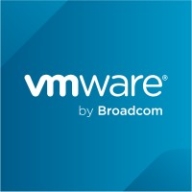

Find out what your peers are saying about Isito, HAProxy, Kong and others in Service Mesh.
| Product | Market Share (%) |
|---|---|
| Kong Mesh | 17.6% |
| VMware Tanzu Platform | 3.2% |
| Other | 79.2% |


| Company Size | Count |
|---|---|
| Small Business | 10 |
| Midsize Enterprise | 3 |
| Large Enterprise | 9 |
Kong Mesh is the ultimate universal service mesh designed for enterprise organizations, offering simplicity and scalability with Kuma and Envoy technologies. This cloud-native solution is versatile, deployable on Kubernetes, VMware, and various environments. Kong Mesh excels in ease of installation, configuration, and management, making it a top choice for organizations seeking streamlined service mesh implementation. With robust features like fine-grained traffic control, observability tools for in-depth monitoring, and comprehensive security mechanisms such as authentication and encryption, Kong Mesh ensures that microservices are both secure and high-performing. Its multi-zone and multi-mesh support allow for distributed deployments, making it a flexible and powerful choice for those looking to enhance their service infrastructure.
VMware Tanzu Platform is designed for cloud-native development and management of Kubernetes, CI/CD processes, microservices, and containerized workloads. It supports deployments both on cloud and on-premises, providing centralized management via Mission Control.
VMware Tanzu Platform offers seamless integration with vSphere, ESX, and vSAN, supporting centralized cluster management and lifecycle management. The platform provides a GUI for monitoring CI/CD pipelines and network policies, enhancing multi-tenancy and Day 2 operations. Users can easily manage Kubernetes clusters, monitor applications, and integrate with tools such as GitHub, GitLab, Cloud Foundry, and Azure. It ensures compliance and security for service providers, financial institutions, and businesses.
What are the key features of VMware Tanzu Platform?
What benefits and ROI should users look for in VMware Tanzu Platform reviews?
Industries such as financial institutions, service providers, and businesses requiring rigorous compliance and security deploy VMware Tanzu Platform. These entities benefit from centralized management, streamlined DevOps processes, and integrated tools, enhancing their capabilities in cloud-native developments and containerized workloads.
We monitor all Service Mesh reviews to prevent fraudulent reviews and keep review quality high. We do not post reviews by company employees or direct competitors. We validate each review for authenticity via cross-reference with LinkedIn, and personal follow-up with the reviewer when necessary.